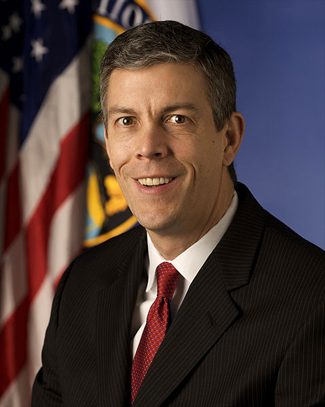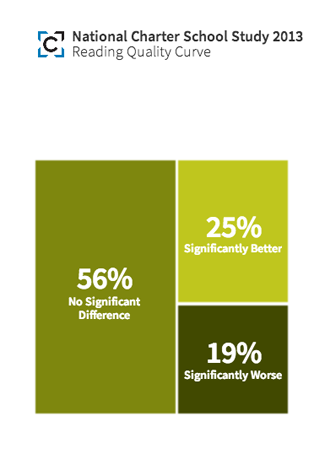
WASHINGTON, D.C.–Secretary of Education Arne Duncan is tired of the vacillating “good news, bad news” stories that always seem to describe charter schools, he said Tuesday, and he urged all charter schools to improve their services and quality.
“I want to stop treating success as though it were a one-off, attributable to heroic teachers or charismatic principals,” Duncan said to an audience of thousands at the National Charter Schools Conference in Washington. “I want to ask instead, why can’t success become the norm?”
Citing a national study released last week by The Center for Research on Education Outcomes (CREDO) at Stanford, Duncan said charter school performance has improved significantly from 2009-2013, particularly for African American, Hispanic and English Language Learner students. But, he added, success still varies widely from school to school, particularly in states that don’t carefully regulate these schools.
There are too many charter schools where students learn less than their public school counterparts, Duncan added.
Charter schools in Pennsylvania, Oregon, Texas, Arizona, Arkansas and Ohio lose an average of one to two months of learning each school year, and charter schools in Nevada lose more than 100 days of learning a year, Duncan said, referring to findings in the study by the Center for Research on Education Outcomes at Stanford University.
Charter schools also have higher rates of suspensions and expulsions than public schools, he said. In the District, for example, 230 students were expelled in 2011-2012, and 99 percent of those came from charter schools.

“That’s simply not acceptable,” he said.
The District does have a higher proportion of charter schools than other cities and was tied for second nationally, along with Detroit, with charter schools representing 41 percent of the city’s schools, according to National Alliance for Public Charter Schools, which hosted the conference. The Alliance describes charters schools as public schools that operate independently of school districts and are tuition-free, non-sectarian, publically-funded by tax dollars, and allowed the freedom to be more innovative.
The Secretary pushed charter schools to reduce their suspension and expulsion rates and find alternative discipline measures. He also called for charter schools to be incubators of innovation, and pioneers in reaching students with disabilities, over-aged students, students in the correctional system, and English Language Learners.
Duncan also outlined three areas — developing and assessing non-cognitive skills, expanding in the early-learning space and using findings in the learning sciences to improve instruction — as areas where charter schools could lead and innovate in the next 20 years.
And a key component to such gains should be greater meaningful partnerships between charter and public schools, he added.
Duncan’s recommendations hit home for Deirdre Simon, the curriculum supervisor for North Jersey Charter Schools in New Jersey, who jotted down his words.
“I wish that we could get a letter, a semi-annual letter from him, identifying what needs to be done and the challenges for the coming year,” Simon said. “There is too much separatism in the charter school movement.”
Greater partnerships with public schools would be a welcome improvement for Rajasri Govindaraju, a curriculum supervisor at the Thomas Edison Energysmart Charter School in Central New Jersey.
Govindaraju said she often feels that charter schools are looked down upon by public schools, and said one of her school’s biggest challenges is finding the space to teach their students.
“We have 3,000 people on our waiting list,” Govindaraju said. “I wish more public schools would work with us to share their buildings.”
Her concerns were shared by Duncan in his address.
“Many high performing charter schools have long, long waiting lists,” Duncan said at the start of his speech. “That story is both inspiring and heartbreaking at the same time.”
Photo credit: United States Department of Education. Illustration credit: CREDO National Charter School Study 2013.



























